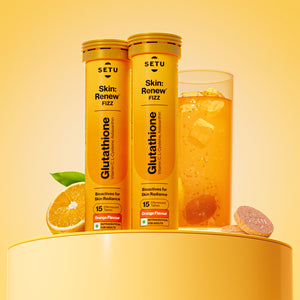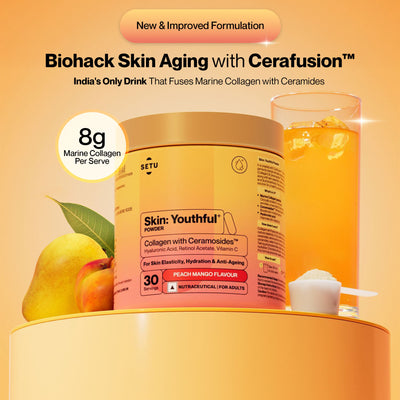Food Frauds: Check If Your Food Is Adulterated With These Nifty Hacks
14 Jan 2020
Food adulteration is a serious problem prevailing in our society. Here’s how to check if the food at home is pure or contaminated.
According to research data released by the Food Safety and Standards Authority of India (FSSAI), nearly 25 percent of edible goods samples tested this year were found to be adulterated or in violation of prescribed standards . Adulteration is the process of adding prohibited substances to the food with similar color or appearance for gaining better profit. It not only lowers the quality of your food but can lead to severe health hazards such as stomach disorders, cancer, liver, and brain damage. Therefore one needs to take a serious note on combating this issue. Listed below are a few do-at-home food adulteration tests to help you find out for yourself if your food is adulterated:
1. Spices And Condiments

1. Chilli Powder: Chilli powder is usually adulterated with brick powder, sand, salt, husk or talcum powder. To detect this adulteration, take a glass of water and sprinkle some chilli powder on the surface. The artificial colorants will immediately start descending in colour streaks. For detecting brick powder, you can also rub some chilli powder at the bottom of the glass. If the surface gets scratched, it could indicate the presence of brick powder or sand.
Pure chilli powder has a natural red or brick red colour. If it has a brownish colour, never buy.
2. Turmeric Powder: Turmeric powder is mostly adulterated with metanil yellow (artificial chemical), Sudan III, and artificial colours . To find this out, add a teaspoon of turmeric powder in a glass of water. Natural turmeric powder leaves a light yellow colour while settling down whereas adulterated turmeric powder will leave a strong yellow colour in water.
The colour of good turmeric is a fluorescent deep orange to bright yellow. If the colour is somewhat a lighter or dull yellow shade, chances are it is of a low quality.
3. Coriander Powder: Coriander powder is frequently adulterated with husk to increase profitability. Although husk itself is non-threatening this reduces the nutritive quality of your coriander powder. One of the simplest ways of detecting food adulteration of coriander powder is by simply adding a teaspoon of the powder to a glass of water and stirring.
Since husk is light and buoyant, it will immediately begin to float on the surface, while pure coriander powder will sink to the bottom.
4. Cumin Seeds: Cumin seeds are used for both flavor and health benefits, but you may not be getting all of those benefits as cumin seeds are often adulterated with grass seeds that have been colored using charcoal dust. As with coriander powder, food adulteration tests to detect cumin seed contamination are extremely simple.
Simply take a handful of the seeds in your palms and rub them together vigorously. Grass seeds that have been colored with charcoal dust will leave a black residue on your palms.
5. Black Pepper Corn: One of the most highly valued spices that we use in everyday foods, black pepper corn is sometimes adulterated with papaya seeds. There’s an easy way to tell if your black pepper is adulterated, but you’ll need to use some alcohol. Fill a small bowl with the alcohol and drop in a few peppercorns. If any seed settles at the bottom, you’ll know that it’s from papaya, as peppercorns would float on the surface.
6. Mustard Seeds: Whether you use them in your cooking or in home remedies, mustard seeds are chock full of health benefits. Unfortunately, you won’t get all of those benefits when they have been contaminated with argemone seeds. While argemone seeds aren’t harmful, they won’t give the same nutrition or flavor, but you can detect adulteration fairly easily.
Crush a handful of seeds and examine the crushed seeds. With mustard seeds, the exterior is smooth, while the inside is yellow, but with argemone seeds, the center is white, while the exterior has a rough texture.
7. Cloves: Cloves can be rather expensive, but they are extremely important as flavoring agents and also because of their powerful therapeutic properties, mainly linked to the presence of eugenol. Although the cloves you buy may not be adulterated in the strictest sense of the word, they could be exhausted cloves or cloves from which volatile oils have already been extracted.
Such exhausted cloves tend to have a smaller size and will not have as strong or distinctive an odor, but you can also chew on a single clove to detect adulteration. Genuine cloves have a pungent and strong flavor that is instantly recognizable.
8. Arrowroot Powder: Arrowroot powder is often used as a food substitute or a home remedy for diarrhea and tummy upsets in babies and aged adults who have weak gastrointestinal systems. This is because of the gentle soothing effect and healing potential of arrowroot. Unfortunately, arrowroot powder is often adulterated with corn starch, which is much cheaper and not exactly healthy.
To tell if it’s adulterated simply add a teaspoon into a pan and add half a cup of water. Turn on your stove and keep stirring as the water heats. As it reaches boiling point, the liquid should become transparent and glassy. If it looks white and cloudy it is adulterated.
2. Sugar And Confectionery

1. Honey: Take a glass of water and add a drop of honey to it. If the drop of honey spreads in water, it indicates the presence of added sugar. Pure honey will not spread in water. The colour of honey varies from almost colourless to dark brown. The consistency can be fluid, viscous or partly to entirely crystallised . As pure honey is thick, it takes a considerable time to move from one side of the container to the other. Whereas in the case of adulterated honey, it is light and flows quickly inside the container.
Good quality honey is thick and has less water content, hence is denser. Pick a jar that is mostly clear and has a golden, dark colour.
2. Jaggery: Dissolve 10 grams of jaggery in water, if it contains adulterants, it will settle down at the bottom.
Ideally, the colour of the jaggery should be dark brown. The yellowish colour may indicate a chemical treatment.
3. Dairy Products

According to a research report, 68.7 percent of milk and milk products sold in the country are not as per the standards set by the Food Safety and Standards Authority of India (FSSAI) .
1. Milk: Place a drop of milk on a slanting surface. Pure milk flows very slowly through the surface leaving behind a white trail whereas milk adulterated with water flows immediately without leaving a mark. Mix five ml of milk with an equal amount of water. Shake it well. Milk adulterated with detergent forms dense lather whereas pure milk will form a thin foam layer due to agitation.
Pure cow milk is yellowish-white in colour due to the presence of beta-carotene pigment. Buffalo and goat milk has a creamy white colour.
2. Butter & Ghee: Take ½ teaspoon of ghee or butter in a clear glass bowl. Add two to three drops of tincture of iodine. If the yellow colour turns blue, it indicates the presence of mashed potatoes, sweet potatoes, or other starches, which take longer to melt as compared to the pure version.
The colour of cow ghee is yellow whereas buffalo ghee is white. Butter comes in both colours, white and yellow. Both melt easily with the body and external heat.
4. Seafood
1. Fish: Adulteration of fish with the chemical formalin poses a serious health threat as this is a known carcinogen that is sometimes used illegally to preserve fish. Detecting adulteration is not as easy as you’d think because the chemical ensures that fish look fresh for long periods. However, the FSSAI and the Central Institute of Fisheries Technology (CIFT) have made home testing kits available to detect the presence of both formalin and ammonia. The kit contains paper strips that you rub against the fish skin, after which the liquid that is included in the kit must be dropped onto the paper. If the paper turns blue, it indicates contamination.
If you can’t access the testing kit, you can also try other ways to check adulterated food, but these aren’t as reliable. Fish that contain formalin will not have the stale fishy smell, but will instead have a pungent odor. Most notably, you will notice that flies do not sit on fishes preserved with the chemical.
The Takeaway
Although consumers today are increasingly concerned and aware about food adulteration, simply wondering about ‘how to detect food adulteration’ will do you no good if you don’t take concrete action. The home food adulteration tests listed here are a helpful starting point, but they are no substitute for laboratory testing. If you have reason to believe that your food might be contaminated with dangerous chemicals, you can also get it tested for adulteration at food testing labs.
Skin: Renew - Glutathione - Orange Flavour
- ₹1,996
- ₹1,996
-
₹2,600 - ( 23% OFF)
Categories
- Choosing a selection results in a full page refresh.
- Press the space key then arrow keys to make a selection.
this is the sidecart










